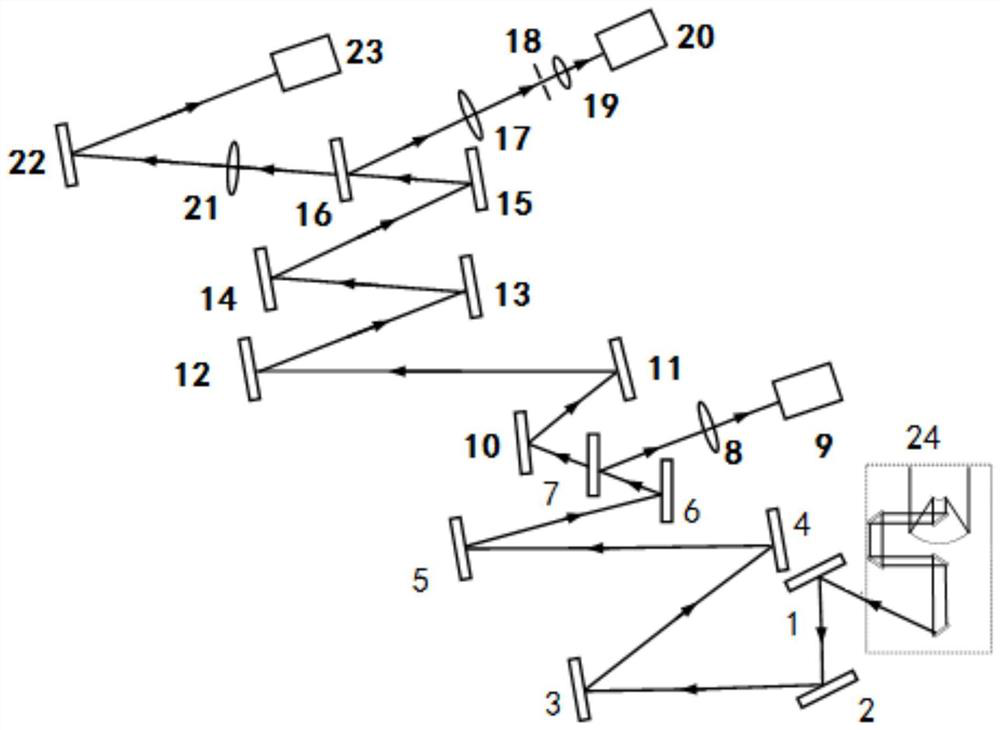Self-adaptive optical system
A technology of adaptive optics and light beams, applied in the field of telescopic imaging, can solve problems such as inability to achieve high-resolution imaging, inability to accurately obtain centroid and wavefront information, and lower detection signal-to-noise ratio
- Summary
- Abstract
- Description
- Claims
- Application Information
AI Technical Summary
Problems solved by technology
Method used
Image
Examples
Embodiment Construction
[0029] Embodiments of the present invention will be further described in detail below in conjunction with the accompanying drawings and examples. It should be noted that, in the case of no conflict, the embodiments of the present invention and the features in the embodiments can be combined with each other. Based on the embodiments of the present invention, all other embodiments obtained by persons of ordinary skill in the art without creative efforts fall within the protection scope of the present invention.
[0030] figure 1 A schematic structural diagram of an adaptive optics system according to an embodiment of the present invention is shown.
[0031] The present invention provides an adaptive optical system, including a first reflector 1, a second reflector 2, a spherical mirror 3, a primary beam expander mirror group, a primary tracking unit, a secondary tracking and high-order aberration closed-loop correction unit, imaging unit. The primary tracking unit includes: a...
PUM
 Login to View More
Login to View More Abstract
Description
Claims
Application Information
 Login to View More
Login to View More - R&D
- Intellectual Property
- Life Sciences
- Materials
- Tech Scout
- Unparalleled Data Quality
- Higher Quality Content
- 60% Fewer Hallucinations
Browse by: Latest US Patents, China's latest patents, Technical Efficacy Thesaurus, Application Domain, Technology Topic, Popular Technical Reports.
© 2025 PatSnap. All rights reserved.Legal|Privacy policy|Modern Slavery Act Transparency Statement|Sitemap|About US| Contact US: help@patsnap.com

